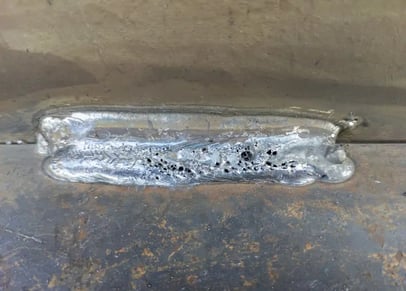What is Porosity in Welding: Trick Aspects and Their Impact on Weld Top Quality
What is Porosity in Welding: Trick Aspects and Their Impact on Weld Top Quality
Blog Article
Recognizing Porosity in Welding: Exploring Causes, Impacts, and Avoidance Methods
As specialists in the welding market are well mindful, understanding the causes, impacts, and avoidance techniques related to porosity is critical for accomplishing robust and trusted welds. By diving into the root triggers of porosity, examining its destructive effects on weld quality, and discovering efficient avoidance techniques, welders can enhance their expertise and skills to generate high-grade welds constantly.
Common Reasons of Porosity
Porosity in welding is primarily triggered by a mix of variables such as contamination, improper securing, and inadequate gas insurance coverage during the welding procedure. Contamination, in the type of dirt, oil, or rust on the welding surface area, develops gas pockets when heated, resulting in porosity in the weld. Improper shielding takes place when the shielding gas, commonly used in processes like MIG and TIG welding, is incapable to completely protect the molten weld pool from responding with the bordering air, resulting in gas entrapment and succeeding porosity. Additionally, insufficient gas coverage, often as a result of inaccurate circulation rates or nozzle positioning, can leave parts of the weld vulnerable, permitting porosity to create. These aspects collectively add to the development of gaps within the weld, damaging its honesty and possibly causing architectural concerns. Understanding and dealing with these typical reasons are critical actions in stopping porosity and making sure the high quality and strength of welded joints.
Impacts on Weld Quality
The existence of porosity in a weld can considerably jeopardize the overall high quality and stability of the bonded joint. Porosity within a weld develops gaps or tooth cavities that compromise the framework, making it much more at risk to breaking, corrosion, and mechanical failure.
Furthermore, porosity can prevent the effectiveness of non-destructive screening (NDT) methods, making it testing to detect various other problems or discontinuities within the weld. This can result in considerable safety concerns, specifically in important applications where the structural honesty of the bonded components is paramount.

Prevention Techniques Introduction
Offered the harmful effect of porosity on weld high quality, reliable avoidance strategies are critical to preserving the architectural stability of welded joints. Additionally, choosing the ideal welding specifications, such as voltage, existing, and take a trip speed, can assist reduce the risk of porosity explanation formation. By incorporating these avoidance methods into welding practices, the occurrence of porosity can be substantially minimized, leading to more powerful and more dependable bonded joints.
Importance of Proper Shielding
Appropriate securing in welding plays a critical role in preventing atmospheric contamination and guaranteeing the integrity of bonded joints. Shielding gases, such as argon, helium, or a blend of both, are typically utilized to shield the weld pool from reacting with elements airborne like oxygen and nitrogen. When these responsive components come right into call with the warm weld swimming pool, they can cause porosity, leading to weak welds with reduced mechanical buildings.

Poor securing can result in various defects like porosity, spatter, and oxidation, endangering the architectural integrity of the welded joint. Adhering to appropriate securing techniques is essential to produce high-quality welds with minimal issues and guarantee the longevity and dependability of the bonded components.
Tracking and Control Approaches
Just how can welders effectively check and manage the welding process to ensure optimum results and protect against flaws like porosity? One key approach is through using sophisticated tracking innovations. These can consist of real-time surveillance systems that give comments on criteria such as voltage, current, travel speed, and gas circulation prices. By continuously keeping track of these variables, welders can identify inconsistencies from the excellent problems and make immediate modifications to stop porosity formation.

Furthermore, implementing correct training programs for welders is vital for keeping track of and regulating the welding process efficiently. What is Porosity. Educating welders on the relevance of preserving regular parameters, such as correct gas shielding and take a trip rate, read review can help avoid porosity issues. Regular analyses and certifications can additionally make sure that welders excel in surveillance and regulating welding procedures
In addition, the use of automated welding systems can enhance tracking and control capacities. These systems can specifically manage welding criteria, lowering the likelihood of human error and ensuring constant weld quality. By incorporating innovative surveillance technologies, training programs, and automated systems, welders can efficiently monitor and manage the welding process to decrease porosity flaws and achieve high-quality welds.
Conclusion

Report this page